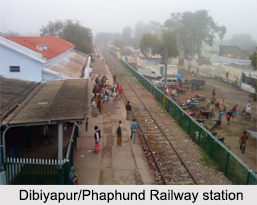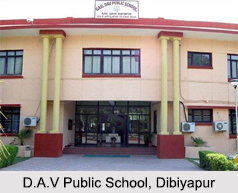 Dibiyapur is a township located in the Auraiya district of the northern state of India, Uttar Pradesh. Auraiya is 22 km from Dibiyapur. Auraiya is the district administrative headquarter of the town. The town is well connected by railways and airways to the other towns of the state. Phaphund Railway Station is the nearest railhead. Amausi Airport is the nearest airport.
Dibiyapur is a township located in the Auraiya district of the northern state of India, Uttar Pradesh. Auraiya is 22 km from Dibiyapur. Auraiya is the district administrative headquarter of the town. The town is well connected by railways and airways to the other towns of the state. Phaphund Railway Station is the nearest railhead. Amausi Airport is the nearest airport.
Geographical Location of Dibiyapur
Dibiyapur town is located on State Highway 21 between Auraiya and Kannauj. The Phaphund railway station is on Kanpur-Delhi section of Howrah-Delhi main line operated by North Central Railway. Towards the North of Dibiyapur there are Kannauj, Rasulabad and towards the South there are Auraiya and Jhansi. The East and West of Dibiyapur are bordered by Kanpur and Etawah respectively.
Demography of Dibiyapur
According to the 2001 census report, Dibiyapur had a population of 20,602 inhabitants. Males constitute 53% of the population and females 47%. In Dibiyapur, 14% of the population is less than six years of age.
 Education in Dibiyapur
Education in Dibiyapur
Dibiyapur has a total literacy rate of 90.3%, which is higher than the national average literacy rate. The male literacy rate is 82.8% and, the female literacy rate is 76.8%. Dibiyapur is a notable educational town in Kanpur-Agra zone. In academic field, the town provides good quality education for nurturing minds in order to gain high productivity. St. Joseph`s Senior Secondary School, Dibiyapur; GAIL D.A.V. Public School; Kendriya Vidyalaya, NTPC Dibiyapur, etc., are renowned schools of Dibiyapur. Raajrani Smarak Mahavidyalaya and Vivekanand Gramodyog Mahavidyalaya are some important colleges of Dibiyapur.
Industries in Dibiyapur
The town houses many industries or public sector undertakings like Gas Compressor Station of Gas Authority of India Ltd., UP Petrochemical Complex and Gas Power Station of National Thermal Power Corporation (NTPC) Ltd.
The Petrochemical plant established here employs thousands of people who live in GAIL Gaon, a small village built especially for GAIL employees. GAIL has also established a compressor station near GAIL Gaon Gas Plant. Also near that, another residential society of GAIL is established. It is known as GAIL Vihar. Another residential township is built for NTPC employees.
Visiting Information of Dibiyapur
Dibiyapur is well connected by roads. It is connected to major cities like Agra, Mathura, Firozabad, Etawah, Kannauj, Hardoi, Shahjahanpur. As mentioned earlier, it is located on State Highway 21. It is located at about 25 km from National Highway 19 (which was initially National Highway 2). It is connected to Kannauj which is located on the Grand Trunk Road. The nearest Airport is Kanpur Airport. Its distance from the town is about 127 km and is around 2 hours drive from the town.



















